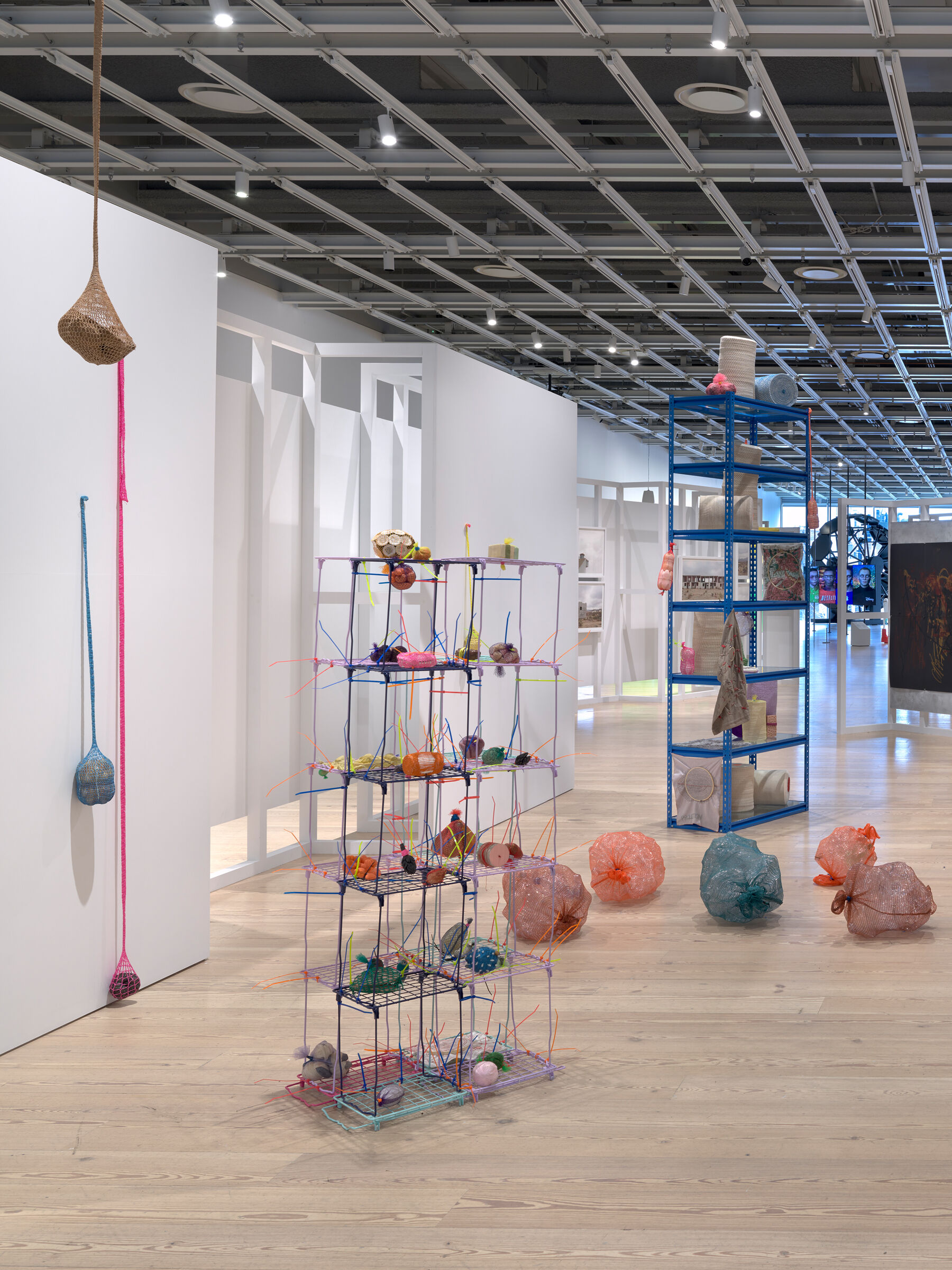Whitney Biennial 2022: Quiet as It’s Kept | Art & Artists
Apr 6–Oct 16, 2022
Whitney Biennial 2022: Quiet as It’s Kept | Art & Artists
Veronica Ryan
52
Floor 5
Born 1956 in Plymouth, Montserrat
Lives in London, United Kingdom, and New York, NY
To create the sculptures on view here, Veronica Ryan combined found and fabricated materials. She employed shelving and different modes of display to consider ideas of classification and how objects, like people, hold histories of migration and displacement. Ryan’s fabricated objects might look or feel familiar, depending on the viewer’s experience. The meanings are poetic, personal, and associative: the cast bottom of a water bottle might suggest a magnolia flower; handmade objects resembling cashew seeds could promise sustenance. “My work really is global, in a way,” she has explained. “It does move around different connecting parts, and it is interconnected. I don’t see any one aspect not related to the wider culture. I’m quite interested in metaphorical references, and the movement of people across different parts of the globe, people take their original culture with them, and then embrace the culture that they’ve moved to.”
Between a Rock and a Hard Place, 2022
-
0:00
Veronica Ryan, Between a Rock and a Hard Place
0:00
Narrator: In these sculptures, Veronica Ryan combines found and fabricated materials, using metaphor and personal association to create a sense of place.
Veronica Ryan: So when I’m talking about environments and looking at the state of the global warming situation and this disjuncture in terms of the natural order, the internal order and chaos and trauma, different states. Those are all parts of the conversation that's going on in the work and by trying to work things out, materially, trying to deconstruct and make meaning, understand the wider cultural manifestation.
Narrator: Ryan was born in the British overseas territory of Montserrat in the Caribbean, and grew up in London. Her work is deeply rooted in a sense of place, history, and global migration—all issues that she approaches very metaphorically, through materials and poetic connections.
Veronica Ryan: About migration and place. I’m always curious what people mean. I just read a really interesting article this morning about the Pacific, and about the garbage patch in the middle of the ocean, and about the way that it’s creating an interesting phenomena for scientists where, according to this swirling ocean, some of the garbage is now creating itself as an attachment for some sea creatures. My work really is global. It does move around different connecting parts, and it is interconnected.
I don’t see any one aspect not related to the wider culture. For instance, the article was talking about gooseneck barnacles that are attaching to either tangles of fishing line or water bottles. I’m quite interested in metaphorical references, and how the movement of people across different parts of the globe, then people take their original culture with them, and then embrace the culture that they’ve moved to, and then, some people are never able to embrace different paradigms. So, that sort of interspace, that gray space of dislocation and so on, and that’s generally the way that I work.

